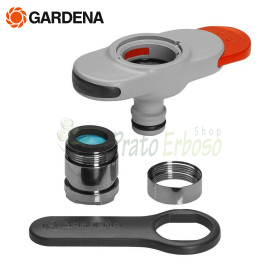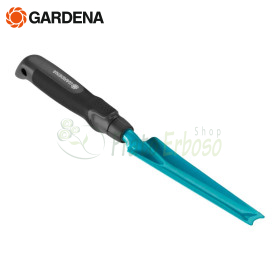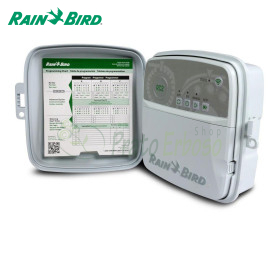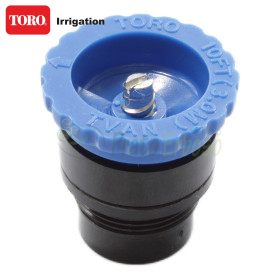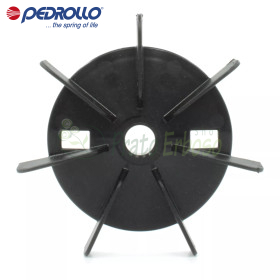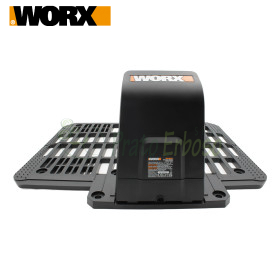18210-20 - Adapter for indoor taps
Dew Control for Lawn Health in Fall
The continuous stagnation of humidity on the leaves in fact favors the entry of fungal pathogens that hinder the normal maintenance of lawns.
The following lawn diseases:
Dollar Spot (Sclerotinia homeocarpa), Rusts, Helminthosporiosis (Drechslera, Bipolaris, Exserohilum), Gray Leaf Spot (Piricularia grisea), Red Thread (Laetisaria fuciformis) and leaf diseases in general are transmitted by that thin film of water that forms during the night and remains in the early hours of the morning.
Fusarium wilt, but also Rhizoctonia spp. (i.e. fungi that overwinter and remain protected in the felt) also benefit from the constant level of humidity present due to dew.
INDEX
1. Lawn Diseases Favored by Dew
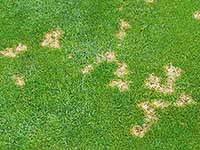 | Dollar Spot |
| Dollar spot is a foliar disease of turf caused by the fungus Sclerotinia homeocarpa. Affected plants show white to pale yellow lesions that progress downward from the leaf tip or laterally across the blades. | |
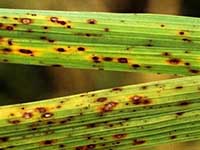 | Helminthosporiosis |
| Helminthosporiosis (scientific name: Bipolaris spp, Drechslera spp.) is a turf fungus that causes extensive (not patchy) decay/yellowing. | |
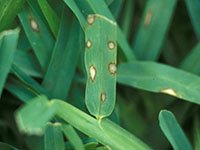 | Gray Leaf Spot |
| Gray Leaf spot is a leaf disease that primarily affects perennial ryegrass and secondarily tall fescue. It is caused by a fungal pathogen (Pyricularia grisea) that infects and destroys the leaf blades. | |
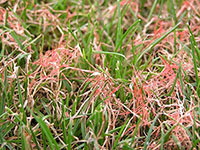 | Red Thread |
| Red thread (Laetisaria fuciformis, syn. Corticium fuciforme) is a fungal disease that affects turf. It manifests itself with irregular spots that are initially light brown in color, later straw-colored. |
2. How to combat the problem of dew on the lawn
With the presence of water in the soil we can obtain what is called field capacity and the consequent formation of an adequate water reserve for times of crisis.
So one of the first and most important cultivation practices in autumn consists in creating larger drops on the leaf that fall to the ground by gravity, overcoming the adhesion force with the leaf blades. We are talking about the practice of autumn morning syringing with the irrigation system turned on for a few minutes in the early hours of the morning. If we do not have an irrigation system or do not want to use it, even just brushing the lawn causes the dew droplets to fall on the ground and the resulting healthiness of the lawn.
But dew can also be contained through other cultivation practices and product administration.
3. Which products come to the rescue
The first control method is the use of wetting agents. In particular, Bottos Water Plus is able to control the correct ratio between microporosity (spaces occupied by water) and macroporosity of the soil (spaces occupied by air) with consequent reduction of the phenomenon of evapotranspiration and the formation of dew and leaf exudates.
Even surfactant products suitable for increasing the phenomenon of infiltration such as Water X by Bottos are crucial to reduce the negative impact of dew. By reducing the surface tension of water, smaller droplets form that slide along the leaf blades because they are unable to develop an adhesion force and adequate viscosity and fall into the soil penetrating it.
The anti-perspirant function is also exercised by turf dyes with particular attention to the Wintergreen product by Bottos. This is a specific non-toxic dye, naturally green, that covers the leaf edges improving the photosynthetic performance and forming a semi-permeable patina against the leakage of liquids from the plants. In this way it is possible to obtain plants that, in addition to being colored in a period when they usually go dormant, are also more robust against traction, wear and trampling (harder and crunchier leaves).
As already mentioned, dew control also indirectly determines felt control and therefore the consequent prevention of the development of other fungal diseases.
So we return again to the need to not have an excessive incidence of dew. It is necessary to have the right amount to maintain a correct level of humidity of the vegetation, but it is also necessary to ensure that this level of humidity does not turn into stagnation and lack of air circulation.
4. Keep the plant in shape
Making the grass roots work well keeps the "turf hydraulic pump" always in operation, ensuring that there is always the correct balance inside the plants between ascending sap and descending sap, being able to transfer reserve substances along all parts of the plants and making every physiological process vital.
Biostimulations, bioactivated/bioactivators with the introduction of beneficial antagonistic fungi, granular fertilisers for root development (high content of slow-release or programmed release Potassium and Nitrogen), agronomic cracking/nailing actions then complete the dew control and management phase in order to maintain healthy and robust lawns.
Share this content
Related products

